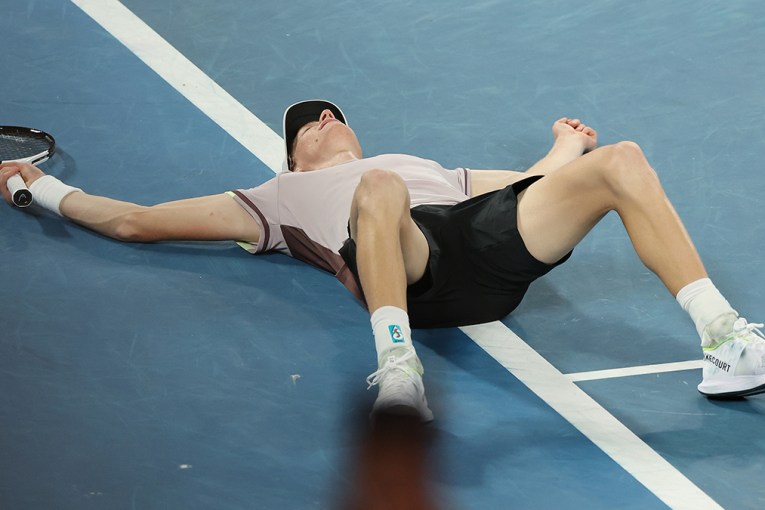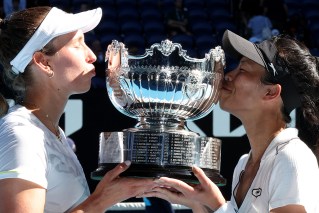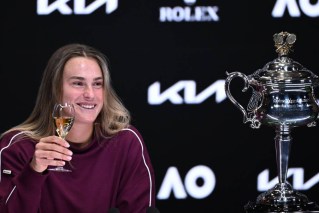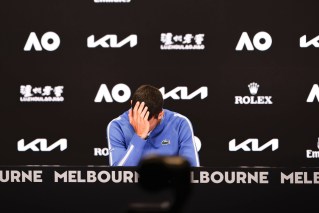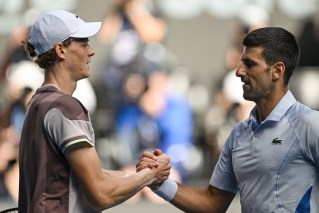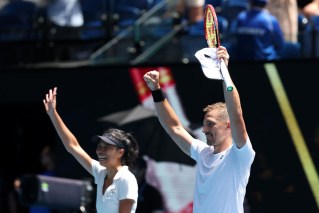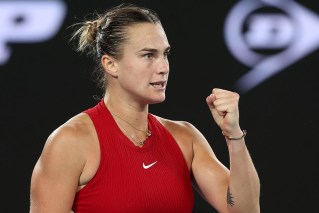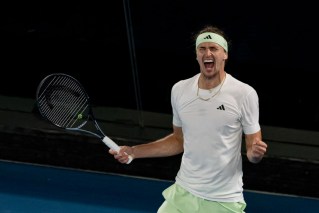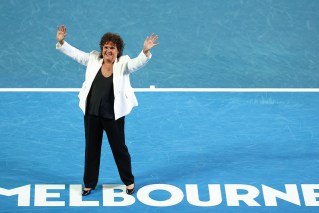Australian Open: The advertising trick served to tennis fans


Rafael Nadal appears to order UberEats during a match at the Australian Open. Photo: Twitter
Channel Nine and UberEats have defended their use of “integrated” television commercials aired during the Australian Open telecast, denying the ads are in bad taste.
The series of commercials embed stars, such as current Australian Open champion Caroline Wozniacki and 17-time major winner Rafael Nadal in apparently real-life match situations.
Dinner violation, Nadal.
Broadcast violation, Uber Eats. #AusOpen @RafaelNadal @UberEats pic.twitter.com/jZFsmIaXqp— Uber Australia (@Uber_Australia) January 16, 2019
In one instance, tennis commentator Jim Courier announces Australian firebrand Nick Kyrgios is receiving an injury timeout – timely, considering his struggle with ailments during his first-round loss to Milos Raonic.
“It’s never good to see the trainer out, let’s hope everything is OK with Kyrgios,” Courier declares.
The scene is believable, with packed stands and official Australian Open court staff and camera crews.
However, the ruse is revealed when the sports doctor is unmasked as former SBS newsreader Lee Lin Chin, who then spruiks the online food delivery platform’s latest offerings.
Several Nine viewers expressed concern that the ad blurred the lines between sports broadcasting and advertising.
Twitter user @jamcs said he felt hoodwinked, and that the ads were “confusingly similar” to live coverage, while @jackomolloyo said he “genuinely thought Kyrgios’ shoulder was in strife”.
Other users reserved complaints for the quality of the tennis stars’ delivery.
https://twitter.com/aceofblades_/status/1085699130091921409
However, an overwhelming number of viewers applauded the advertisements for a surprising take on sports advertising.
Anyone knocking the UberEats ads can do one.
Nadal trying to say half-Hawaiian, half-Meatlovers (or whatever he ordered) is hilarious.
And the Lee Lin Chin cameo with Kyrgios is all-time #AusOpen
— Sam Daddo (@sammydaddo) January 17, 2019
The @UberEats Australian Open ads featuring @NickKyrgios is some of the best advertising commercials ever made! Well done to that marketing & creative agency!! #AusOpen
— Dimitri Peppas (@DimitriPeppas_) January 16, 2019
Nine and Uber return viewers’ critical serve
A Nine spokesperson told The New Daily they worked in collaboration with UberEats and Tennis Australia “to secure talent, vision, audio, locations and spot placement”.
The campaign was filmed inside Melbourne Park’s Rod Laver Arena to achieve the authenticity of the tongue-in-cheek campaign.
Nine’s spokesperson says it was designed to work counterintuitively against the traditions of sports advertising.
“This is a fun, creative ad that has been designed to both engage and entertain the audience,” Nine’s spokesperson said.
The broadcaster said in a statement it was encouraged by an overwhelmingly positive response, indicating viewers could anticipate similar future initiatives.
Special Group, the creative agency behind the previous UberEats Tonight I’ll be Eating campaign, is responsible for the Australian Open series.
Uber Australia and New Zealand director of marketing Steve Brennen said the company saw the opportunity for the films to catch unsuspecting viewers off-guard during relentless ad breaks.
“The intention of the ads has always been to entertain and excite our audience, plus have some fun with the inclusion of celebrities and unexpected heroes,” Mr Brennen told TND.
“Every year, the Australian Open gets the nation talking and we hope these films have injected a bit of light-hearted, Aussie humour into the action-packed schedule.”
A modern take on product placement: industry insiders
Creative director of Campaign Edge Dee Madigan does not believe the campaign contravenes advertising standards, but says it would be “a mistake” for other advertisers to try and copy its success.
“I think it’s very clever, it’s the sort of thing that’s kind of a once-off, it works because it’s surprising,” Ms Madigan said.
“I think if it happened again, people would get annoyed. You don’t want people to feel tricked. It’s OK, once.”
Ms Madigan added that integrated content has been around since the dawn of broadcast media, declaring “soap operas and radio shows had products” tied into their content.

Nick Kyrgios receiving treatment during his first round Australian Open match. A similar scene was broadcast in an UberEats advertisement. Photo: Getty
Behavioural scientist Brian Gibbs concurred, saying the commercials’ ‘zinger’ conclusions are the redeeming quality that makes viewers more receptive.
“It’s designed around filtering – the idea that the viewer tries to basically filter out information that isn’t what they’re after, and commonly, they try to filter ads out altogether,” Mr Gibbs said.
“Here, they find themselves paying attention to what they only belatedly realise is an ad, an inertia effect has occurred, and they retain attention.
“They realise, ‘My goodness, that was an ad!’ and the novelty of that could cause them to continue to pay more attention.
“If it’s done cleverly and there’s some payoff in terms of humour with respect to novelty, that’s not going to create much ill-will.”
The Australian Association of National Advertisers (AANA) Code of Ethics states advertisers should not use “associated sporting [personalities]” in conjunction with “media devoted to general and sports news”, unless a clear distinction is made.
The New Daily is not suggesting the UberEats advertising campaign is in breach of the AANA’s code of ethics.
Ad Standards Australia confirmed to The New Daily they have not received any complaints regarding the commercials.
